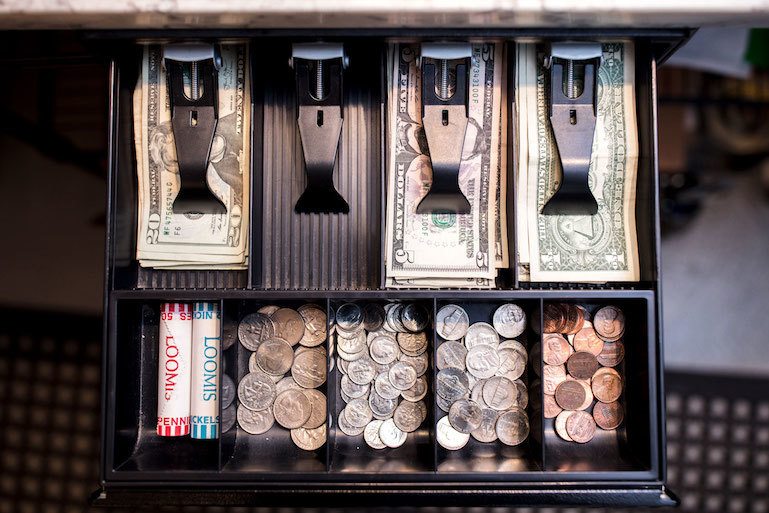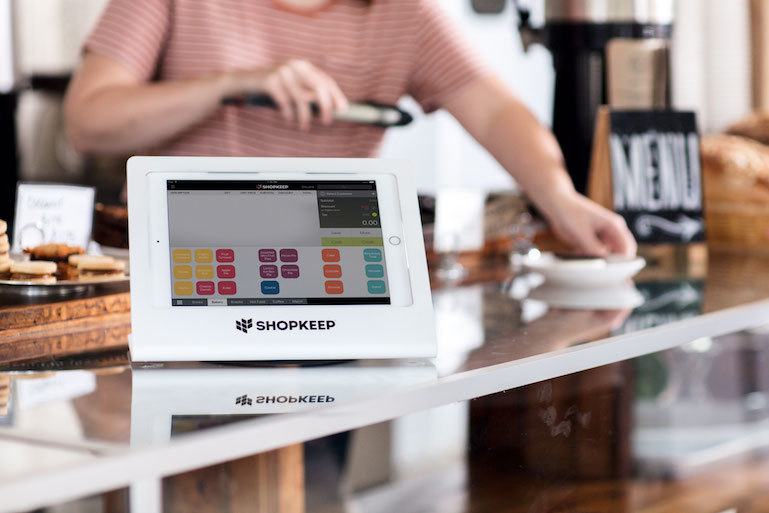
Financing Demystified: How to Get a Small Business Loan
Learning how to get a small business loan is very important in the business world. However, depending on your type of business, accessing extra funds for inventory, payroll, advertising, or expansion can seem difficult or even impossible.
The truth is that many newly established businesses fail within the first few years, which is why it is so important to get as much support as possible. During the first two years of your business, there will be several unique challenges to face. This is a time when a loan could be most beneficial, but it’s also often the hardest time to apply for one. Many banks and financial institutions will be unwilling to give you a loan at this time because you pose a risk in terms of ever paying the loan back.
After you have survived the first two years of business, financial institutions will be much more willing to give you a loan. The reasoning for this is that you will have demonstrated your ability to survive common small business challenges. You’ll also have two years of financial performance data that a lender can use to understand the risk profile of your business.
With that in mind, there are two types of loans that are available to most small business owners. You can either choose a secured or unsecured loan. When you choose a secured loan, it means that you will have to offer collateral to qualify for the loan. Your assets or property will be used as security against the money you are borrowing. The lending institution will then follow specific criteria to determine whether you are a suitable candidate for the business loan or not.
How to Qualify for a Small Business Loan
Banks and other financial institutions are only concerned about one thing: getting repaid. Thus, to be eligible for a small business loan, you have to prove that your business can service the loan requested – meaning it is capable of making all the loan repayments.
To increase your chances of qualifying for a small business loan, you must be well prepared when applying for loans with lending companies. This means that you must consider what it is that they are looking for, show them documentation that proves your business’ profitability, and prepare yourself to answer their questions about your overall business plans. This process is similar to a job interview, right down to the fact that you must dress to impress.
What Lenders Examine Most
To begin, let’s take a look at the things that small business lenders consider most when determining whether or not they will loan money to a small business owner.
Business Plan
Having a strong business plan, as well as knowing and understanding the needs of your business and the direction you want to take it, is absolutely what most lenders and financial organizations want to know about you before they approve your small business loan. They need to see how the borrowed money will be used and receive assurance that it will yield positive results so that you’ll be able to pay them back.
Whether you need money for administrative expenses, inventory purchase, equipment funding, expansion, or capital investments, make it clear in your business plan presentation. The business plan should also include a repayment plan explaining how the loan will be repaid, including repayment period, budget, and cash flow.
SEE ALSO: Retail 101: How to Set Up a Retail Business for Success
Business Feasibility
The lenders will also critically look at your business idea to determine if it is worth investing their money. A feasibility study covering all the aspects of your business can help to reveal if your idea has a good chance of success.
Financial Statements
Banks and lenders will require three years of past financial statements at a minimum. The reason is to see if your business could have serviced the loan over the last three years. If it passes this test, then your business should be able to service the loan for the next few years.
Business Experience
Lenders need to see that you understand what you’re doing. Showing proof that you work with experts such as accountants, financial advisors, HR managers, and logistics staff indicates that you have a full grasp of your business and may make you a suitable candidate for the loan. You may also need to present your resume and your management team resumes as well.
Credit History
Banks require high credit scores: around 680 and above. If your business lacks an excellent credit rating, your application might be rejected based on that one criterion.
Getting a small business loan when you have bad credit can at times prove to be a fruitless exercise, with the resulting frustration and often desperation being enough to drive one close to the edge. Unless you have built up enough equity to offer substantial collateral, your options are minimal. This does not mean that the small business owner should give up on his or her dream of making a business work. There are many options available for business owners who have bad credit.
SEE ALSO: How to Get Small Business Loans with Bad Credit
Other documents needed to get a small business loan include:
- Business profile that explains the history of the business, including product or service sold, operations plan, and marketing strategy.
- Personal financial statements: financial statements of the last 90 days from each owner with 20 percent or more ownership and most recent federal income tax returns.
- Pro forma balance sheet: a report that details equity, assets, and debts owing.
- Projected annual cash flow: a statement of expected earnings, profits, and expenses presented in a profit and loss format along with an explanation for each.
- Loan collateral.
Supplemental documents including a lease, property title or mortgage statement, licenses, certifications, franchise or partnership agreement, etc.
The Average Small Business Loan Amount Offered to Merchants
According to the Federal Reserve, the average business loan amount disbursed by banks in the US in 2018 was $633,000. This number gives you a rough idea of how much business funding you might be able to get. However, the average small business loan amount across all lending institutions is a difficult number to calculate as there are so many lending institutions that offer so many different types of funding.
The average small business loan amount is based on the type of loan, the type of lending institution, and the specific lender in question. For example, online lenders offer an average loan amount of $5,000 to $200,000, while the average SBA microloan is approximately $13,000.
The Application Process
To apply for a small business loan, you’re required to fill out a loan application by the lender. Fill out the form as honestly and as accurately as possible. You will also need to submit some of the documents mentioned earlier. They include but are not limited to: a comprehensive business plan, financial statements that prove adequate cash flow and a thorough credit check.
You must also gather a long list of documents, which include owners’ resumes, personal background statements, and business licenses. The lender will then evaluate the application based on your credit scores, management abilities, collateral and amount you can contribute to the business.
The time it will take to finalize your small business loan application mainly depends on the lender’s timeline. Most small business loan applications take a minimum of two to three months. The application process for larger loan amounts may take longer. However, you can take a few steps to speed up the process, such as learning all the requirements of the specific loan you want to apply for so that you can prepare for each required step in advance.
Additionally, consult with the various lending institutions to find out their estimated timeline before deciding on a lender. Finally, return requests for information or inquiries from the lender promptly.
Determining How Much Financing You Can Afford
While filling your loan application form, one section you have to fill is the ‘desired loan amount.’ This is where you need to ask yourself how much financing you can afford. Knowing how much loan you can afford is paramount to any business. This is because if you ask for a huge amount the bank may question your ability to repay.
On the other hand, if you ask for a small amount, it may be insufficient to fund your business. You need to understand your cash flow (how much money comes in and how much goes out) so that you know the amount of money that will be left to repay the loan. Other factors you need to consider are the interest rates, the total amount you need to pay back, and the profit can you expect to make by taking the loan, among other things.
Alternative Options for Small Business Financing
As we have already discussed, banks are not a very good option for funding a small business. One of the primary reasons for this is that small businesses are considered to be high-risk investments from the bank’s perspective.
There are several other alternatives for small business loans. These alternative lenders have a completely different list of criteria to provide funds for small business owners.
Some of the alternative lenders include:
Micro Loans
These are loans of $35,000 and under, offered at a low interest rate. They are typically given to new or start-up businesses that need working capital by non-profit community lenders. Each lender has its own requirements. Eligible borrowers include under-represented or disadvantaged groups such as woman-owned businesses, veteran-owned businesses, and minority-owned businesses, which can even include businesses with bad credit. You will have a better chance of getting financed if the micro-lender is in your area.
Small Business Administration (SBA) Loan
SBA-backed loans are actually funded by standard commercial banks but are guaranteed by the SBA. That means that if a bank makes a business loan that defaults, a percentage of its losses will be covered by the government (SBA). This decreases the risk of lending money for the banks and, in turn, loosens the approval criteria for the loan.
Get into a Partnership
Another alternative, if you cannot qualify for a bank loan on your own, is to take on a partner that meets the eligibility requirements. You may need to create an equity partnership to do this, but at least it will help you acquire the cash you need to grow your business.
Online Lenders
Online lenders have also filled a funding gap by offering small business loans with faster processing times (less than a week) and simple eligibility criteria. While interest rates may be high, a loan from an online lender can be a convenient solution for small business owners who have struggled to get funding. Some online lenders even offer interest rates close to those provided by banks, which makes them a competitive option for a wide range of small business owners.
Many of these online lending companies will also accept applications from those who have bad or no credit. However, you will need to provide some supporting documents to help your loan case, such as bank statements, tax returns, whole house income, etc.
When filling out an application on an online website, you will also need to have your state identification card or driver’s license, proof of business ownership, most recent bank statement, and a voided check.

Merchant Cash Advance (MCA)
A merchant cash advance is another excellent option for small business owners seeking additional funds. Technically, a merchant cash advance is not a loan, but rather a cash advance based on future credit card sales. Also called a credit card receipt advance, a merchant advance is when a lender advances a sum of money that is automatically remitted through a small percentage of each successive credit card sale.
The advantage of an MCA is that the cash advance is remitted in small sums as credit card sales are made. There are no large monthly minimums to meet, as the lender will just keep taking a cut from your daily sales until the cash advance is fully remitted.
To qualify, most MCA companies require you to be an existing business that has been operating for more than one year, as well as transact a minimum monthly number of credit card sales. While the terms and procedure of an MCA are more flexible than a bank loan application, the price tag for the capital can vary widely from lender to lender.
The merchant cash advance requires no collateral, and you do not need high credit scores either. As a result, it’s easy to qualify for this kind of funding. Shop around to find an MCA provider that offers the lowest rates to help you save a substantial amount. If you’re a ShopKeep customer, you may already qualify for ShopKeep Capital, an easy and reliable way to source a merchant cash advance. Checking eligibility is as simple as logging into your ShopKeep BackOffice account.
So, What Is Right for You?
At the end of the day, there are many more ways to finance a business out there. These are just a few of the more popular options for getting a small business loan. Choosing the right business loan depends on your situation. Before you apply for a small business loan, learn all the details of the particular loan and compare lenders against one another. If you can afford the extra time and resources necessary to get a bank business loan, then perhaps it is the best option for you. Lastly, be sure you understand the repayment terms before signing anything.
If you do not have a perfect credit score or believe the coming months may be a bit slow for your business, a loan based on cash-flow or a merchant cash advance may be the best option. In the end, the solution is to find a dependable bank or lending company that you can consistently work with the get the extra funding your business needs.
Want to try ShopKeep for yourself?
Just answer a few easy questions.
Need help finding the right point of sale?
Just complete the form. We’ll call you right back to explain how ShopKeep can work for you.
Hit the ground running.Sprinting, in fact!
Read our free, comprehensive guide, Small Business 101, to learn all you need to know about starting a thriving business.

